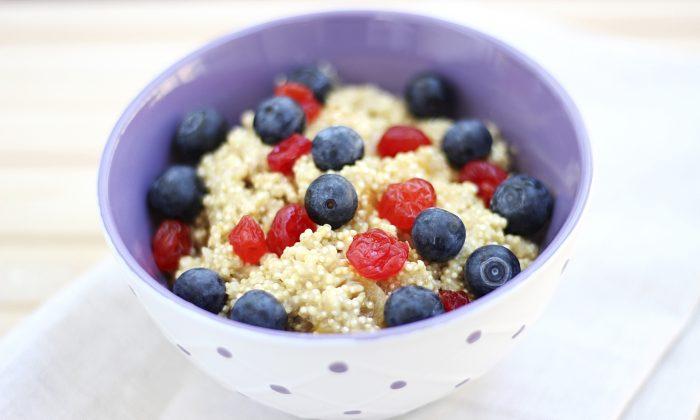We all grew up hearing that calcium and milk products were essential for healthy bones and teeth.
Now, one in two women over the age of fifty will break a bone because of osteoporosis! It’s only reasonable to wonder: Am I getting enough calcium?
Discover the benefits of calcium, the symptoms of calcium deficiency, how to get calcium into your body from typical and vegetarian sources and how to keep it in.
Benefits and Facts of Calcium
- It is the most abundant mineral in the body.
- 99 percent of your calcium is in your bones. Calcium is essential for healthy bones and teeth.
- Your body uses your bones as a calcium storehouse, withdrawing it through your bloodstream when it’s needed for other parts of the body.
- Other parts of the body that use calcium include nerves, brain, muscles and heart.
- Calcium is necessary for specific hormone functions.
- Calcium is a co-enzyme necessary for clotting.
- Many plants have more calcium per gram than any animal product –- including milk.
- Even fruits like the common orange and kiwi, along with their many health benefits, contain calcium.
Symptoms of Calcium Deficiency
- Muscle cramping–-especially at night.
- Dry skin and brittle nails.
- Increased PMS symptoms.
- Bone fracture or breakage. This is a severe symptom, but unfortunately, for many people, it is the first way they find out that they have weak or thin bones.

How Much Calcium Do You Need?
Government recommendations are 1,000 mg per day for women 19-50, 1,300 for boys and girls 9-18 and 1,200 for older men and women.
Growing children certainly do have higher needs for calcium, but before you go rushing out to buy calcium supplements or a jug of milk, consider these facts:
- In China, where for thousands of years they didn’t even have a word for osteoporosis, the average peasant farmer lives a very healthy life with just 250 mgs/day of calcium.
- Northern countries that have the highest levels of calcium consumption from dairy products have the highest levels of osteoporosis.
- One Harvard study tracking 78,000 nurses found that nurses who drank 2 or more glasses of milk per day had 46% higher chance of hip fracture than those who drank one glass or less.
- Standard calcium supplements (from elemental sources like limestone) have been linked with higher rates of heart attacks.
- Many studies have shown that taking calcium supplements has no effect on fracture occurrence.
- Individuals whose protein is mostly animal based have twenty times or more hip fractures as individuals who consume a more plant based protein.
So How Do I Get Healthy Bones?
1. Consume a plant based diet of calcium-rich food.
- Plant based diets have vitamin K and other nutrients necessary for calcium absorption.
- Leafy vegetables that contain vitamin K, like kale, spinach, broccoli and cabbage also contain calcium!
This is a list the Top Dairy-Free Calcium-Rich Foods.
2. Consume a diet that is balanced for Acid/alkaline.
- The reason northern populations who eat more meat have poor bone health is because animal protein is much more acidic than plant proteins. Generally, their whole their diet is too acidic.
- An acidic body will rob the alkaline mineral calcium from the bones in order to balance the acid in the blood and tissues.
- The body is therefore slowly leaching away its own calcium and weakening the bones even though there might be plenty of calcium in the diet.
3. You Don’t Have to Eat Dairy Products
- Cheeses, although they have the highest levels of calcium foods (see list) are also some of the most acid forming foods.
- Our food sensitivity testing over 20 years with over 20,000 tests indicates that most individuals experienced decreased energy levels when consuming milk products. This decrease in vitality shows is eventually linked to a number of health concerns, including bone health.
- Many health experts question the quality of our homogenized and commercially produced milk. We are now wondering whether adults should even be drinking milk at all.
4. Go For Walks or Runs in The Big Outdoors
- Vitamin D from sunshine is essential for calcium absorption.
- Regular weight-training exercise gives signals to the bones that they need to be stronger. The body is smart and responds!
- Exercise has been shown to decrease every degenerative disease, as long as it is not too strenuous.

5. Don’t Smoke.
Smoking along with destroying almost every aspect of your body also happens to be in the top 10 risk factors for osteoporosis.
6. Avoid Junk Food–Especially Sodas
- Almost all junk foods are acidic–particularly soft drinks that contain phosphoric acid.
- Teenage girls who consume the most soda have five times the fractures of those who consume the least.
- Junk foods contain excessive amounts of sodium which has been shown to reduce calcium levels in the body.
7. Eat more vegetables and fewer grains.
- 38 percent of the average North American’s acidic load comes from grains, and most of that comes from wheat. Until you master the skills of choosing grains and proteins that are more alkaline-–a simple solution is to reduce wheat and increase vegetables.
- In our testing we almost never find wheat is healthy for an individual.
- Many individuals find that by reducing gluten grains from their diet, their overall health improves. When the whole body is functioning more smoothly, it is better able to manage bone health.
8. Skip the Calcium Supplements
- If a supplement is not whole food-based, and very carefully processed, it will not be digested by the body and may even cause imbalance.
- Calcium supplements have been linked to increased risk for heart attacks and little reduction in fractures.






Friends Read Free